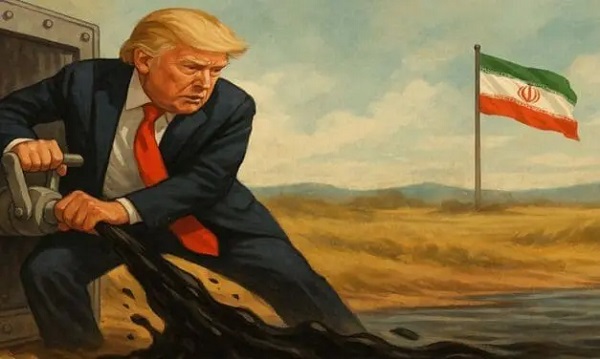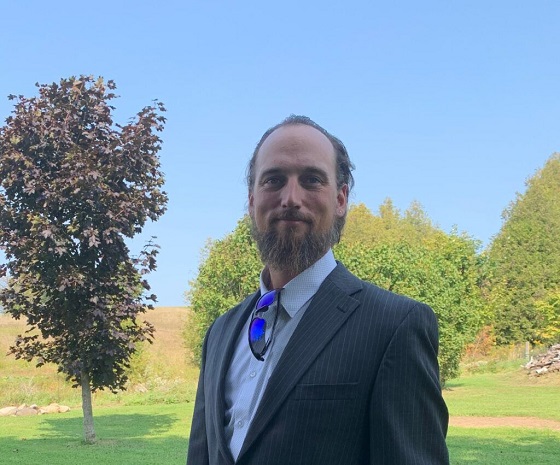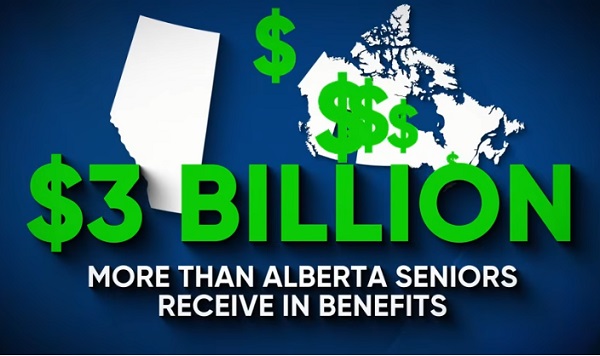Energy
Energy, climate, and economics — A smarter path for Canada

By Resource Works senior fellow Jerome Gessaroli
Canada has set ambitious climate goals, aiming to cut its greenhouse-gas emissions by 40 to 45 per cent by 2030, and to hit net-zero emissions by 2050.
Now a senior fellow at Resource Works, Jerome Gessaroli, argues that Canada is over-focusing internally on reducing greenhouse-gas emissions, when we should “look at cooperating with developing countries to jointly reduce emissions.”
He continues: “And we do that in a way that helps ourselves. It helps meet our own goals. That’s through Article 6 of the Paris Accord, allowing countries to share emission reduction credits from jointly developed projects.”
Reduction on a global scale
Article 6, says Gessaroli, means this: “We can work towards meeting our own emission goals, and can help developing countries meet theirs. We can do it in a way that’s much more efficient. We get a lot more bang for our buck than if we are trying to just do it domestically on our own.”
The point is that, in the end, emissions are reduced on a global scale — as he stressed in a five-part series that he wrote for Resource Works last November.
And in a study for the Macdonald-Laurier Institute (where he is a senior fellow) he wrote: “The benefits could be large. Canada could reduce emissions by 50 per cent more if it carried out methane reduction projects both internationally and domestically, rather than solely in Canada.”
But is Ottawa interested?
Gessaroli says the federal government expressed interest in Article 6 in 2019 — but has not moved since then.
“They barely looked at it. Since this requires government-to-government coordination, it needs Ottawa’s initiative. But there doesn’t seem to be too much interest, too much appetite in that.”
All Ottawa has said so far is: “Going forward, Canada will explore these and other similar options to strengthen international co-operation and generate incentives for further emission reductions.”
Gessaroli on Resource Works
Gessaroli has been working with Resource Works since he first spoke with our Stewart Muir, following a letter that Muir wrote in The Vancouver Sun in 2022: ‘Gas has key role to play in meeting 1.5C climate targets.’
Gessaroli saw in Resource Works advocacy for responsible resource development “for the people, the citizens of BC, in an environmentally responsible manner and in a manner that’s efficient, driven by the private sector.”
And: “Resource Works supports responsible resource development, not uncritical expansion. We have these resources. We should develop them, but in a way that benefits society, respects nature, respects the local peoples, and so that wide elements of society can benefit from that resource development.”
Gessaroli on electric vehicles
Gessaroli hit a shared interest with Resource Works in a 2024 paper for its Energy Futures Institute, critiquing BC’s plan to require that all new vehicles sold in the province must be electric zero-emission vehicles (ZEVs) by 2035.
For one thing, he wrote, BC would need to spend $1.8 billion to provide electric charging points for the vehicles. And billions more would be required to provide expanded power generation and transmission systems.
“The Government of BC should adjust or rescind its mandated targets for new minimum zero-emission vehicle sales.”
And on ZEV subsidies
Stewart Muir and Barry Penner, chair of the Energy Futures Institute, wrote a guest column last October in Business in Vancouver. They cited Gessaroli’s paper above, and noted: “According to Gessaroli, meeting BC’s ZEV targets will require an additional 2,700 gigawatt hours of electricity by 2030, and 9,700 gigawatt hours by 2040—almost equal to the output of two Site C dams.”
Gessaroli has also looked at the subsidies BC offers (up to $4,000) to people who buy an electric vehicle.
“The subsidies do help. They do incentivize people to buy EVs. But it’s a very costly way to reduce carbon emissions, anywhere upwards of $600, $700, even $800 a tonne to eliminate one tonne of carbon.
“When you look at the social cost of carbon, the government uses a figure around $170 a tonne. That’s the damage done from every tonne of carbon emitted into the atmosphere. So we’re paying $800 to remove one tonne of carbon when that same tonne of carbon does damage of about $170. That doesn’t sound like a very cost-effective way of getting rid of carbon, does it?”
Gessaroli on Donald Trump’s policies
Gessaroli says tariffs on imports are not the only benefit that Donald Trump plans for U.S. industry that will hurt Canada.
“He also wants to reduce tax rates, 15% for US manufacturers, and allow full deductibility for equipment purchases. You reduce regulations and red tape on companies while lowering their tax rates. They’re already competitive to begin with. Well, they’re going to be even more competitive, more innovative.”
For Canada, he says: “Get rid of the government heavy hand of overtaxing and enforcing inefficient and ineffective regulations. Get rid of all of that. Encourage competition in the marketplace. And over time, we’d find Canadians can be quite innovative and quite competitive in our own right. And we can hold our own. We can be better off.
“And there’d be more tax revenues being generated by the government. With the tax revenue, you can build the roads, build the hospitals, improve the healthcare system, things like that.
“But without this type of vibrant economic type activity, you’re going to get the stagnation we’re seeing right now.”
About Jerome Gessaroli
Gessaroli leads the Sound Economic Policy Project at the B.C. Institute of Technology. He is the lead Canadian co-author of Financial Management: Theory and Practice, a widely used textbook. His writing has appeared in many Canadian newspapers.
Stewart Muir, CEO of Resource Works, highlights Gessaroli’s impact: “Jerome brings a level of economic and policy analysis that cuts through the noise. His research doesn’t just challenge assumptions—it provides a roadmap for smarter, more effective climate and energy policies.
“Canada needs more thinkers like him, who focus on pragmatic solutions that benefit both the environment and the economy.”
Gessaroli and Karen, his wife of 34 years, live in Vancouver and enjoy cruising to unwind. In his downtime, Gessaroli reads about market ethics and political economy — which he calls his idea of relaxation.
Energy
B.C. Residents File Competition Bureau Complaint Against David Suzuki Foundation for Use of False Imagery in Anti-Energy Campaigns

From Energy Now and The Canadian Newswire
A group of eight residents of Northeast British Columbia have filed a formal application for inquiry with Canada’s Competition Bureau, calling for an investigation into the David Suzuki Foundation’s (the Foundation) use of false and misleading imagery in its anti-energy campaigns.
The complaint alleges that the Foundation has repeatedly used a two-decade-old aerial photograph of Wyoming gas wells to falsely depict modern natural gas development in B.C.’s Montney Formation. This area produces roughly half of Canada’s natural gas.
Key Facts:
- The misleading image has been used on the Foundation’s website, social media pages, reports and donation appeals.
- The Foundation has acknowledged the image’s true source (Wyoming) in some contexts but has continued to use it to represent B.C. development.
- The residents claim this materially misleads donors and the public, violating Section 74.01(1) of the Competition Act.
- The complaint is filed under Sections 9 and 10 of the Act, asking the Bureau to investigate and impose remedies including ceasing the conduct, publishing corrective notices, and returning proceeds.
Quote from Deena Del Giusto, Spokesperson:
“This is about fairness and truth. The people of Northeast B.C. are proud of the work they do to produce energy for Canada and the world. They deserve honest debate, not scare tactics and misleading imagery used to raise millions in donations. We’re asking the Competition Bureau to hold the David Suzuki Foundation to the same standard businesses face: tell the truth.”
Background:
Natural gas development in the Montney Formation supports thousands of jobs and fuels economic activity across the region. Accurate public information is vital to informed debate, especially as many Canadians live far from production sites.
SOURCE Deena Del Giusto
Economy
Trump opens door to Iranian oil exports

This article supplied by Troy Media.
U.S. President Donald Trump’s chaotic foreign policy is unravelling years of pressure on Iran and fuelling a surge of Iranian oil into global markets. His recent pivot to allow China to buy Iranian crude, despite previously trying to crush those exports, marks a sharp shift from strategic pressure to transactional diplomacy.
This unpredictability isn’t just confusing allies—it’s transforming global oil flows. One day, Trump vetoes an Israeli plan to assassinate Iran’s supreme leader, Ayatollah Khamenei. Days later, he calls for Iran’s unconditional surrender. After announcing a ceasefire between Iran, Israel and the United States, Trump praises both sides then lashes out at them the next day.
The biggest shock came when Trump posted on Truth Social that “China can now continue to purchase Oil from Iran. Hopefully, they will be purchasing plenty from the U.S., also.” The statement reversed the “maximum pressure” campaign he reinstated in February, which aimed to drive Iran’s oil exports to zero. The campaign reimposes sanctions on Tehran, threatening penalties on any country or company buying Iranian crude,
with the goal of crippling Iran’s economy and nuclear ambitions.
This wasn’t foreign policy—it was deal-making. Trump is brokering calm in the Middle East not for strategy, but to boost American oil sales to China. And in the process, he’s giving Iran room to move.
The effects of this shift in U.S. policy are already visible in trade data. Chinese imports of Iranian crude hit record levels in June. Ship-tracking firm Vortexa reported more than 1.8 million barrels per day imported between June 1 and 20. Kpler data, covering June 1 to 27, showed a 1.46 million bpd average, nearly 500,000 more than in May.
Much of the supply came from discounted May loadings destined for China’s independent refineries—the so-called “teapots”—stocking up ahead of peak summer demand. After hostilities broke out between Iran and Israel on June 12, Iran ramped up exports even further, increasing daily crude shipments by 44 per cent within a week.
Iran is under heavy U.S. sanctions, and its oil is typically sold at a discount, especially to China, the world’s largest oil importer. These discounted barrels undercut other exporters, including U.S. allies and global producers like Canada, reducing global prices and shifting power dynamics in the energy market.
All of this happened with full knowledge of the U.S. administration. Analysts now expect Iranian crude to continue flowing freely, as long as Trump sees strategic or economic value in it—though that position could reverse without warning.
Complicating matters is progress toward a U.S.-China trade deal. Commerce Secretary Howard Lutnick told reporters that an agreement reached in May has now been finalized. China later confirmed the understanding. Trump’s oil concession may be part of that broader détente, but it comes at the cost of any consistent pressure on Iran.
Meanwhile, despite Trump’s claims of obliterating Iran’s nuclear program, early reports suggest U.S. strikes merely delayed Tehran’s capabilities by a few months. The public posture of strength contrasts with a quieter reality: Iranian oil is once again flooding global markets.
With OPEC+ also boosting output monthly, there is no shortage of crude on the horizon. In fact, oversupply may once again define the market—and Trump’s erratic diplomacy is helping drive it.
For Canadian producers, especially in Alberta, the return of cheap Iranian oil can mean downward pressure on global prices and stiffer competition in key markets. And with global energy supply increasingly shaped by impulsive political decisions, Canada’s energy sector remains vulnerable to forces far beyond its borders.
This is the new reality: unpredictability at the top is shaping the oil market more than any cartel or conflict. And for now, Iran is winning.
Toronto-based Rashid Husain Syed is a highly regarded analyst specializing in energy and politics, particularly in the Middle East. In addition to his contributions to local and international newspapers, Rashid frequently lends his expertise as a speaker at global conferences. Organizations such as the Department of Energy in Washington and the International Energy Agency in Paris have sought his insights on global energy matters.
Troy Media empowers Canadian community news outlets by providing independent, insightful analysis and commentary. Our mission is to support local media in helping Canadians stay informed and engaged by delivering reliable content that strengthens community connections and deepens understanding across the country.
-

 Energy1 day ago
Energy1 day agoB.C. Residents File Competition Bureau Complaint Against David Suzuki Foundation for Use of False Imagery in Anti-Energy Campaigns
-

 Alberta2 days ago
Alberta2 days agoAlberta uncorks new rules for liquor and cannabis
-

 COVID-191 day ago
COVID-191 day agoCourt compels RCMP and TD Bank to hand over records related to freezing of peaceful protestor’s bank accounts
-

 Crime2 days ago
Crime2 days agoProject Sleeping Giant: Inside the Chinese Mercantile Machine Linking Beijing’s Underground Banks and the Sinaloa Cartel
-

 C2C Journal23 hours ago
C2C Journal23 hours agoCanada Desperately Needs a Baby Bump
-

 International1 day ago
International1 day agoTrump transportation secretary tells governors to remove ‘rainbow crosswalks’
-

 Alberta1 day ago
Alberta1 day agoAlberta Next: Alberta Pension Plan
-

 Agriculture11 hours ago
Agriculture11 hours agoLacombe meat processor scores $1.2 million dollar provincial tax credit to help expansion







